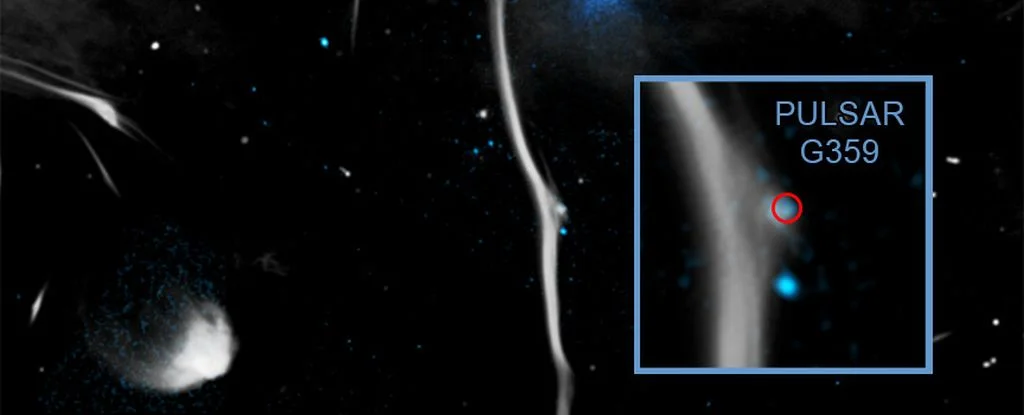
Cosmic Collision: Rogue Pulsar Smashes Galactic ‘Bone’ in Milky Way at Millions of Miles Per Hour
A dramatic cosmic collision has been revealed in the center of our Milky Way galaxy. A fast-spinning neutron star, or pulsar, has been identified as the culprit behind a significant fracture in a massive galactic filament known as the Snake, a structure resembling a 'bone' stretching an incredible 230 light-years. This unusual event, captured by NASA's Chandra X-ray Observatory and the MeerKAT radio array in South Africa, provides new insights into the dynamic and sometimes violent processes occurring within our galaxy.

The structure, officially named G359.13 (but nicknamed The Snake), is one of the longest and brightest filaments at the Milky Way's center, located about 26,000 light-years from Earth. These filaments, often referred to as galactic 'bones', consist of parallel magnetic fields and high-energy particles. However, unlike other smooth filaments, the Snake displays notable kinks or 'fractures'.
The discovery, detailed in the May 2024 issue of the Monthly Notices of the Royal Astronomical Society, points to a high-speed pulsar as the cause of at least one of these fractures. The research team, led by Farhad Yusef-Zadeh of Northwestern University, pinpointed an X-ray and radio source at the fracture point, suggesting the pulsar slammed into the filament at speeds between one million and two million miles per hour (500 to 1,000 kilometers per second). As Yusef-Zadeh explained, the force of the impact warped the magnetic field within the filament, leading to observable distortions in the radio signal.

Pulsars are born from the remnants of massive stars that collapse and explode in supernovas. These explosions can propel the resulting neutron star across the galaxy at incredible speeds, sometimes referred to as a 'natal kick'. In this instance, the pulsar's high-velocity collision with the Snake appears to have not only fractured the filament but also accelerated electrons and positrons—the antimatter counterparts of electrons—to high energies, further intensifying the X-ray emissions.
The collision site showcases significantly enhanced radio emission, further supporting the theory that the filament's magnetic field was dramatically altered upon the pulsar's impact. The image resembles a cosmic X-ray, highlighting the damage inflicted on the galactic 'bone'. While the source of one fracture has been identified, the origin of a second, smaller fracture observed on the Snake remains a mystery, inviting further investigation.
This discovery illuminates the chaotic nature of the Milky Way, revealing an ongoing series of violent encounters. The busted filament serves as a reminder of the dynamic forces shaping our galaxy. With advanced observational tools like Chandra and MeerKAT, astronomers are better equipped to unravel these cosmic mysteries and catch galactic troublemakers in the act. What other hidden collisions and fractures lie undiscovered in the vast expanse of our galaxy? Leave your thoughts and theories in the comments below!